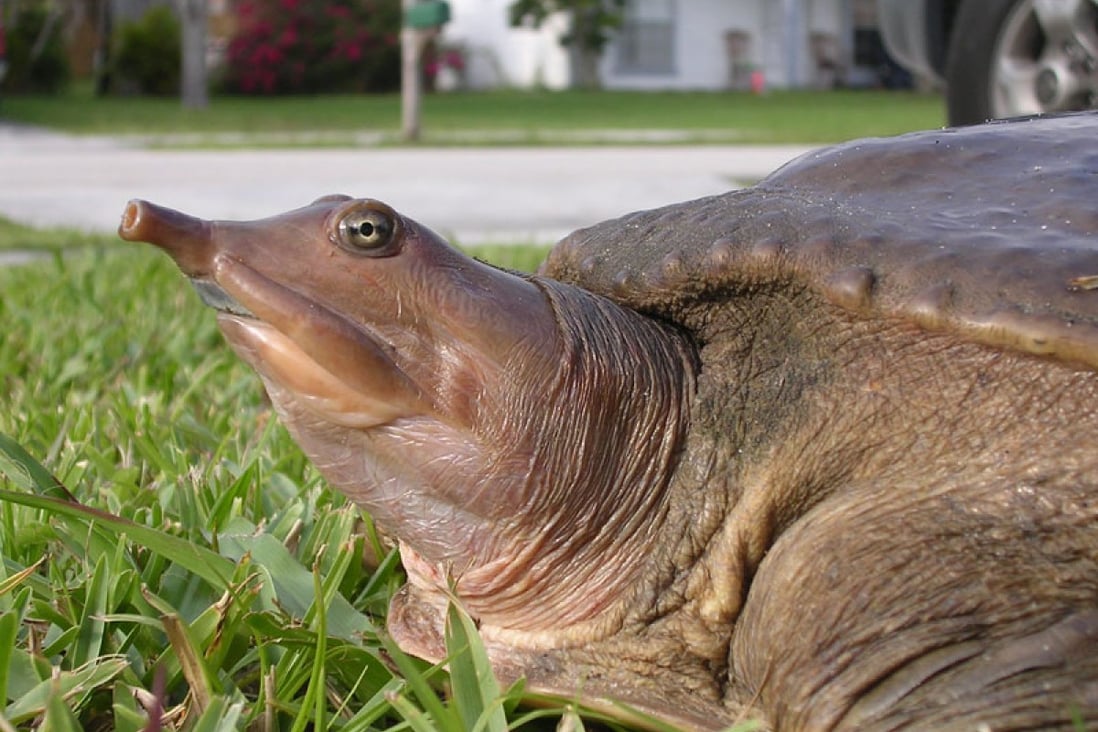
New fossil shows how softshelled turtles have barely changed in 120 million years South China
A soft tortoise shell can be a cause for alarm, as it may indicate a potential underlying issue. This article aims to shed light on the possible reasons behind a soft shell, addressing various factors such as diet, vitamin deficiency, and habitat conditions that may contribute to this condition. By gaining a deeper understanding of the causes.

Soft shell turtle! Tortoise Forum
The Florida softshell turtle is a large turtle with a flattened, pancake-like body, a long neck, an elongated head with a long snorkel-like nose, and large webbed feet, each with three claws. While most turtles have hard shells composed of scutes, the Florida softshell turtle has a cartilaginous carapace covered in leathery skin.

florida softshell turtle, viera wetlands Turtle, Wetland, Types of turtles
Common names for this condition are 'rubber jaw' in lizards, or 'soft shell' in turtles and tortoises. The root cause is usually a combination of too little calcium, too much phosphorous, or too little vitamin D. The more you study it, the more amazing the calcium cycle is.
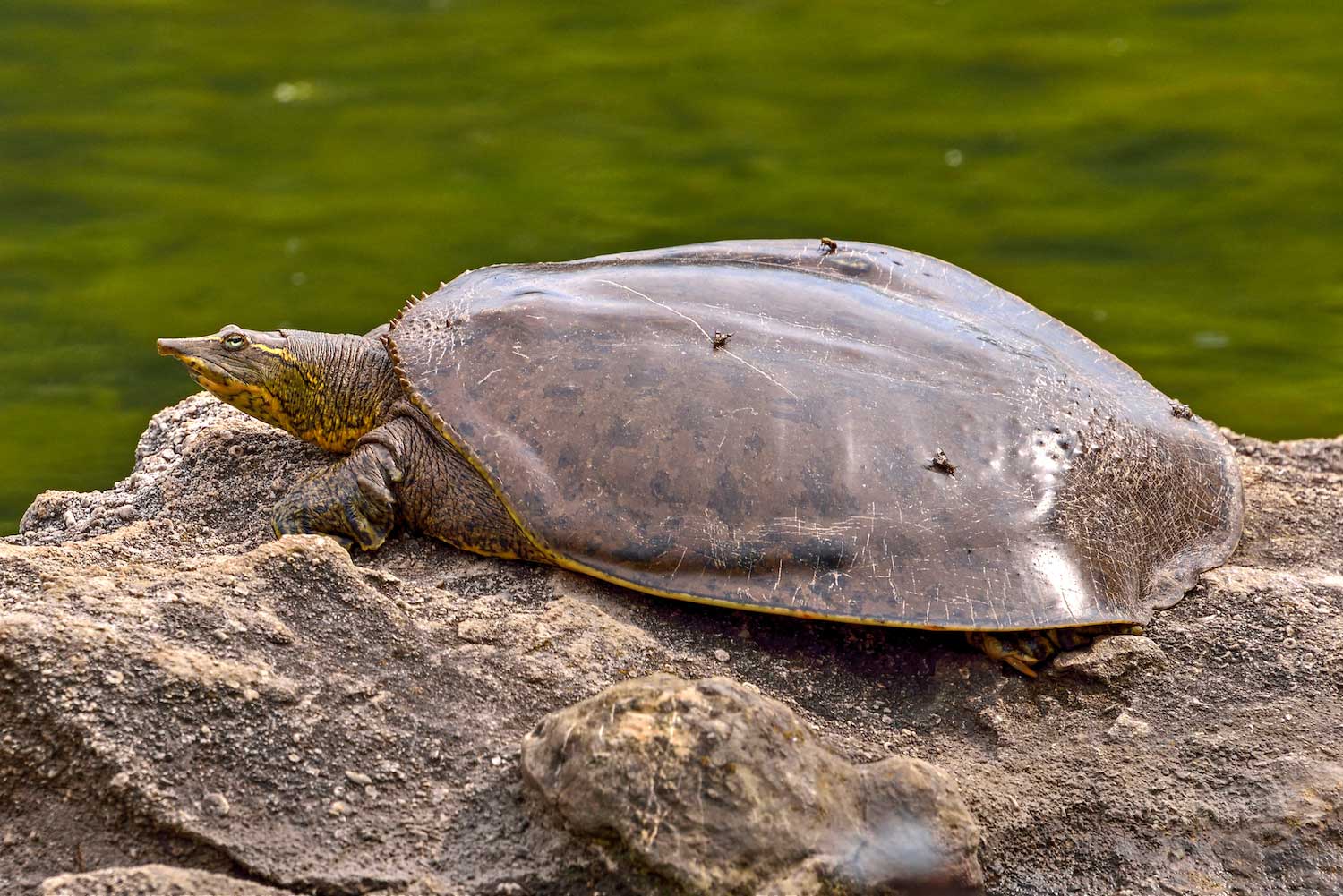
Creature Feature The More Vulnerable Spiny Softshell Turtle Forest Preserve District of Will
While the shells of these ancient reptiles are typically known for their hardness and impenetrability, the occurrence of soft shells raises questions about the health and well-being of desert tortoises.

Endangered softshelled turtles get new lease of life lucknow Hindustan Times
The carapace is the top part of the shell, while the plastron is the bottom. When a baby tortoise hatches from its egg, its shell is soft and pliable, providing flexibility for the young tortoise to move and grow. The process of a baby tortoise's shell hardening is known as ossification.
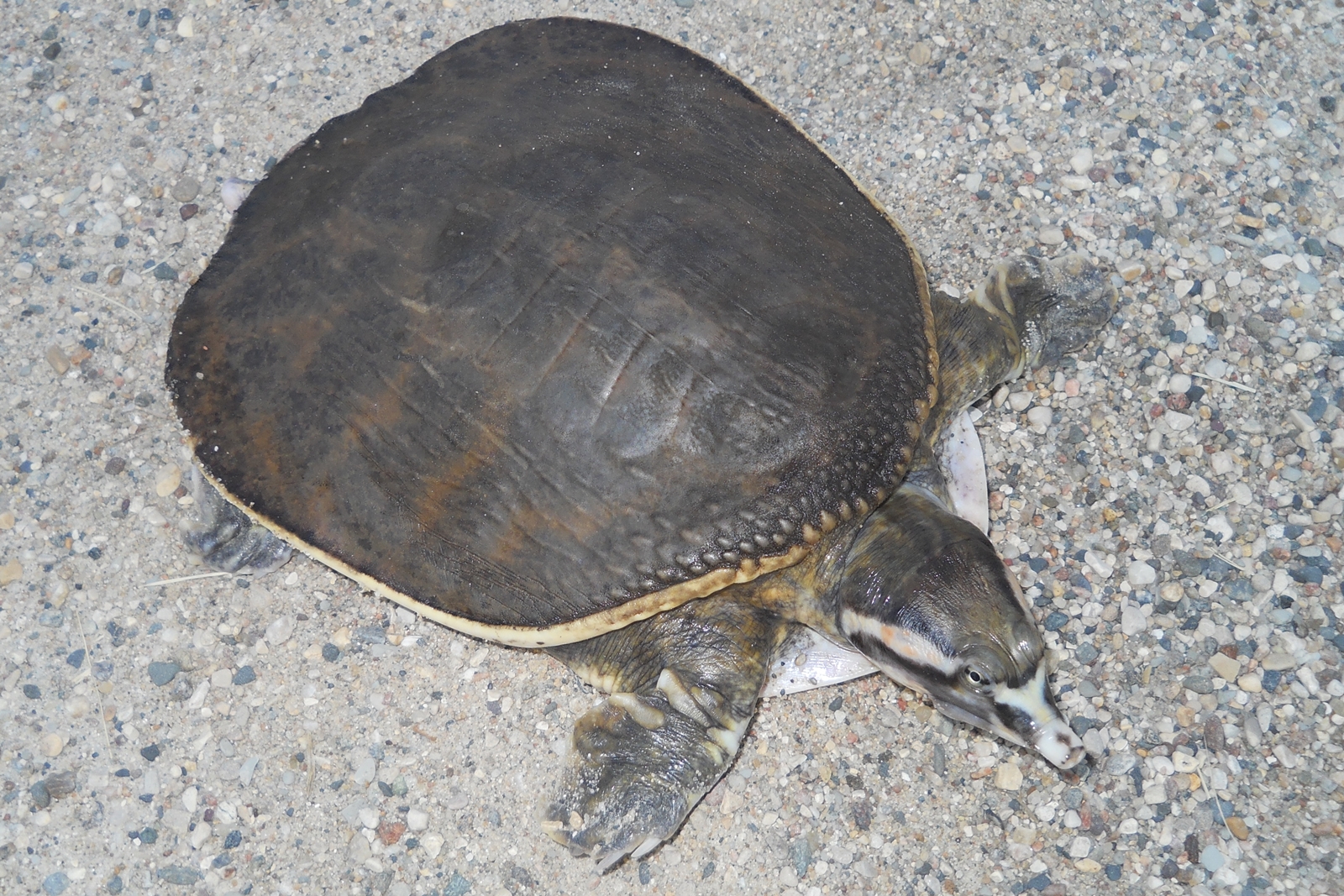
Florida Softshell Turtle Facts, Habitat, Diet, Life Cycle, Baby, Pictures
A soft tortoise shell can be a cause for concern, so it's essential to take steps to ensure your pet's health. Here is a four-step guide to help you:. Evaluate the Environment: Check your turtle's habitat to make sure it meets their needs.Ensure the temperature and humidity levels are correct, and give them a suitable basking area.
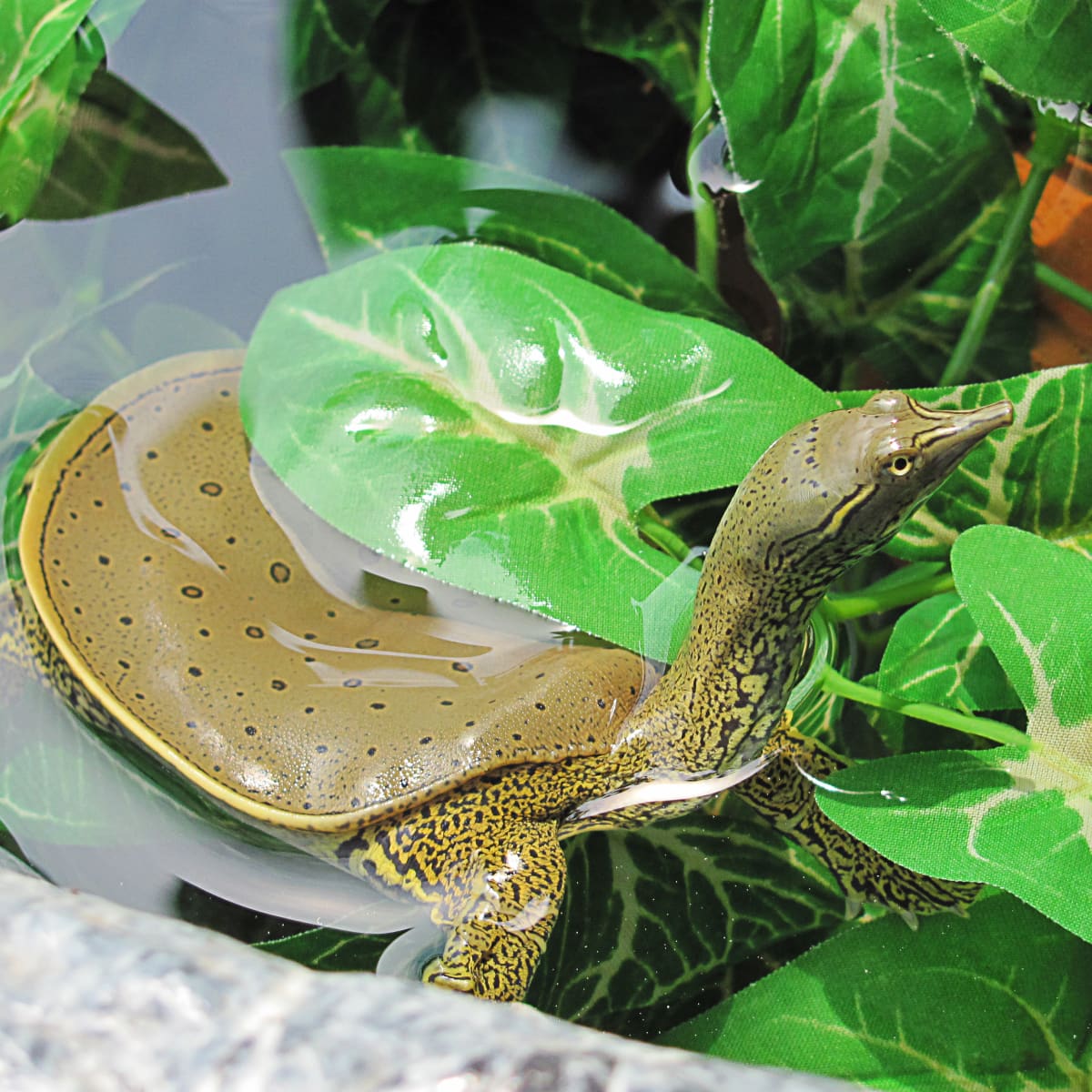
How To Take Care Of A Baby Turtle In The Winter / How To Take Care Of Baby Turtles Simple
Allow the tortoise to soak in the water for 15-20 minutes. Replace the dirty water. Gently brush the carapace to remove built-up dirt and debris. Pay particular attention to the space between the scutes, which can trap dirt. Clean other body parts, including the head, legs, tail, and neck.

{Graphic} Soft Shell Turtle Clean Cooking soft Shell Turtle Tasty Food in Asian Culture Recipe
If you find your tortoise's shell is soft, it means that it's suffering from metabolic bone disease. A soft shell is usually caused by metabolic bone disease, which is caused by the lack of calcium in its diet, or by poor lighting, which can prevent the proper absorption of calcium.
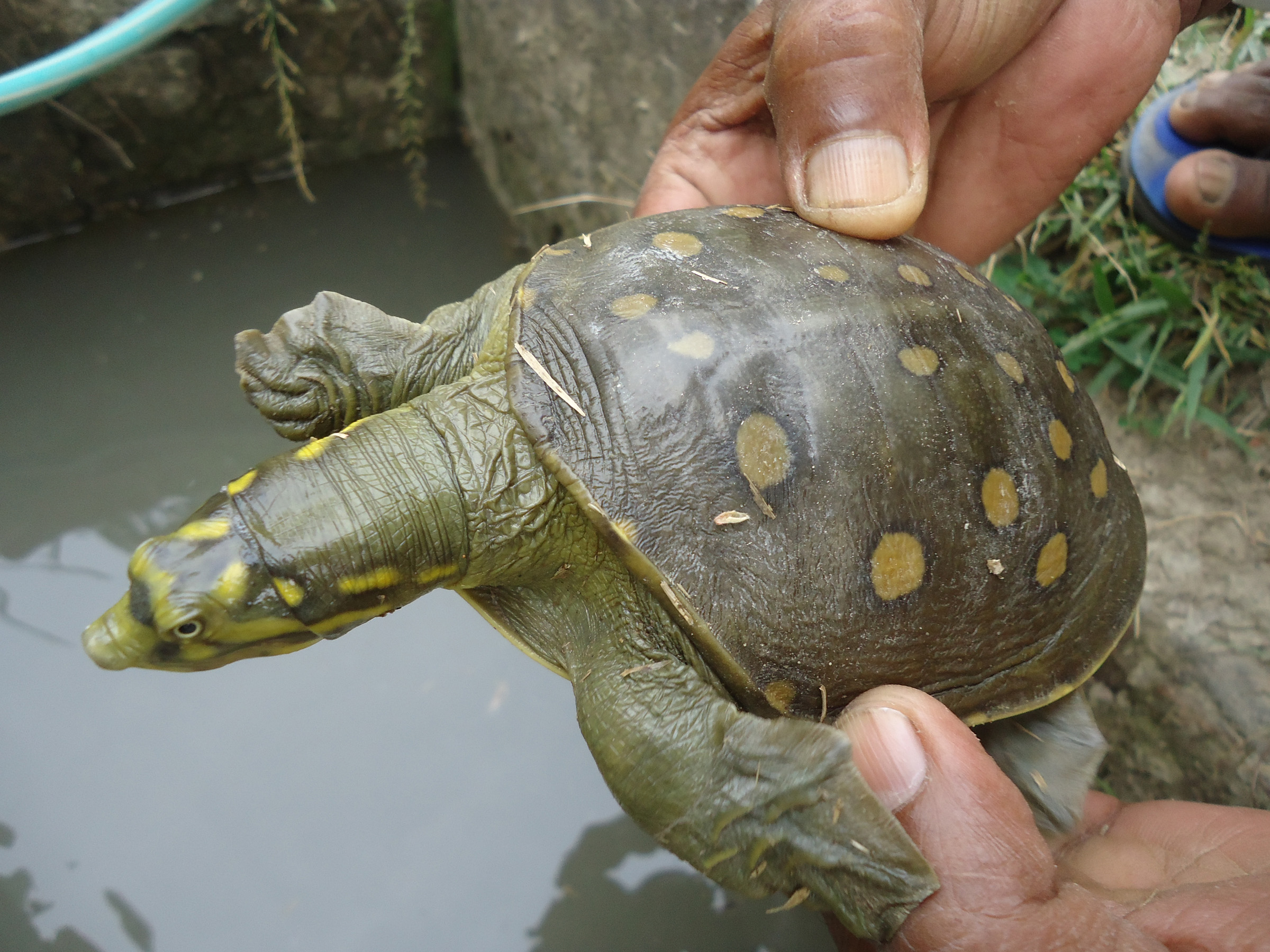
Indian Flapshell Turtle Facts and Pictures
If your pet has a soft shell, it might be able to be corrected with a different diet and exposure to the sun. Your vet will tell you more when you take the tortoise in for an appointment. Not only does a crack or damage to the shell suggest blunt force trauma, but it also means that the tortoise could be injured internally.

Softshell turtle Softshell, Animal Kingdom, Turtles, Animals, Photography, Tortoises, Animales
The Trionychidae are a taxonomic family of a number of turtle genera, commonly known as softshell turtles. The family was erected by Leopold Fitzinger in 1826. Softshells include some of the world's largest freshwater turtles, though many can adapt to living in highly brackish areas.

Explained The Simple Physics of How Tortoises Deal With Turning Turtle The Wire
Baby sulcata tortoises naturally have a semi-soft shell, but the shell hardens by 6 to 9 months of age. It is normal for the shell to be slightly pliable, but not spongy. With age, the baby tortoise's shell will harden. It is common for the top of the shell (the carapace) to be hard and for the bottom of the shell (the plastron) to be soft.
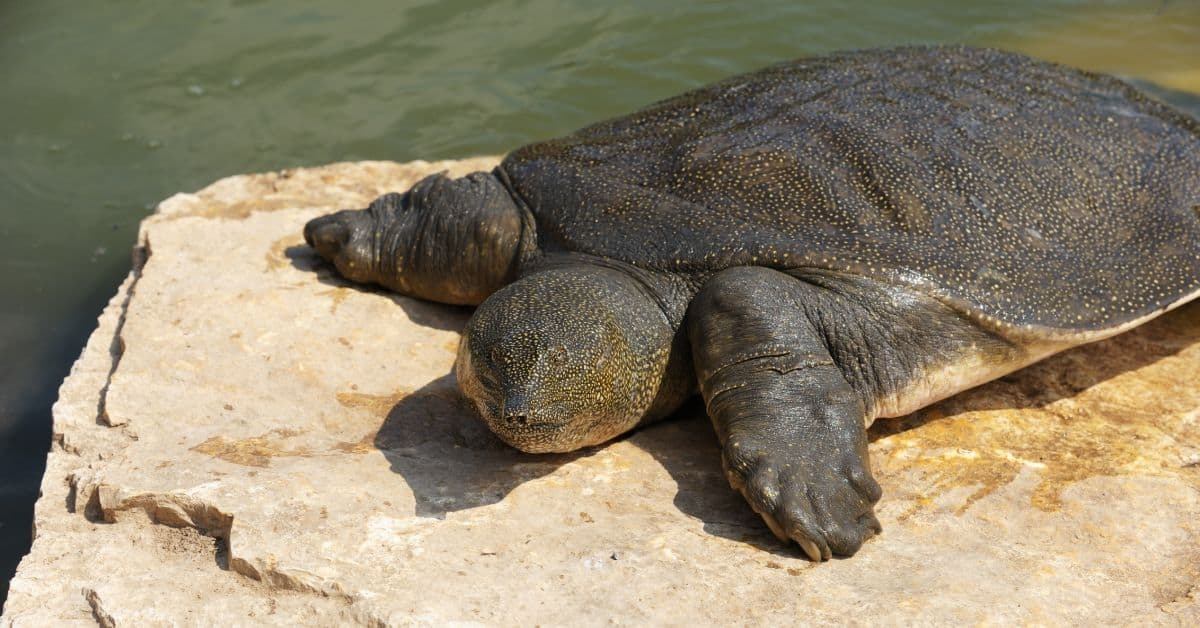
African Softshell Turtle (Nile Softshell) All Turtles
Every turtle and tortoise species has a soft shell after hatching. The baby turtle still needs protection; hence, the shell is a vital organ. Unlike the adult reptiles' shells, the baby turtles have softer armors, which get harder as they mature. The turtle grows with the same shell instead of growing a new one.

In the Desert, Tortoises, Turtles, Desert Tortoise, Reptiles, Soft Shell Turtle.
There are several factors that can cause a tortoise's shell to become soft. One of the most common causes is a lack of proper nutrition, particularly calcium and vitamin D3. Without these essential nutrients, a tortoise's shell may not develop properly, leading to softness and deformities. Other causes include bacterial or fungal infections.

Tortoises and Turtles Flat shell or domed shell? SIMILAR BUT DIFFERENT IN THE ANIMAL KINGDOM
I have included 5 most common tortoise shell problems and their treatment below, 1. Pyramiding. Pyramiding indicates the excessive and bumpy growth of the scutes in tortoises. The abnormal development of the scutes resembles mini pyramids and hence the name. This condition only affects the carapace of the tortoises.

FileFloridasoftshellturtlecropped.jpg
The most common type of shell rot is bacterial soft-shell, which is caused by a build-up of bacteria on the shell. Here are a few common causes of the soft shell in tortoises: Unhygienic Enclosure

Soft shell turtle Tortoise turtle, Turtle love, Pet birds
Why do tortoise shells go soft? The common reasons for your tortoise's shell to go soft are vitamin deficiencies, metabolic bone disease, and shell rot. Some tortoise species, as well as very young tortoises, have naturally softer shells so it is not caused by any illness or disease.